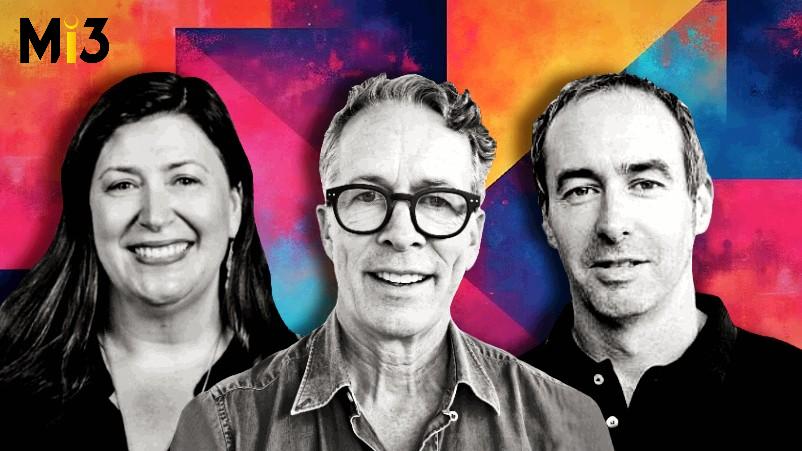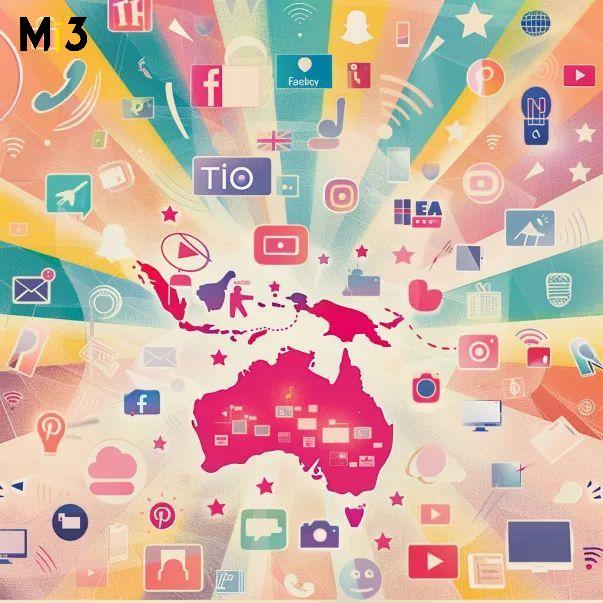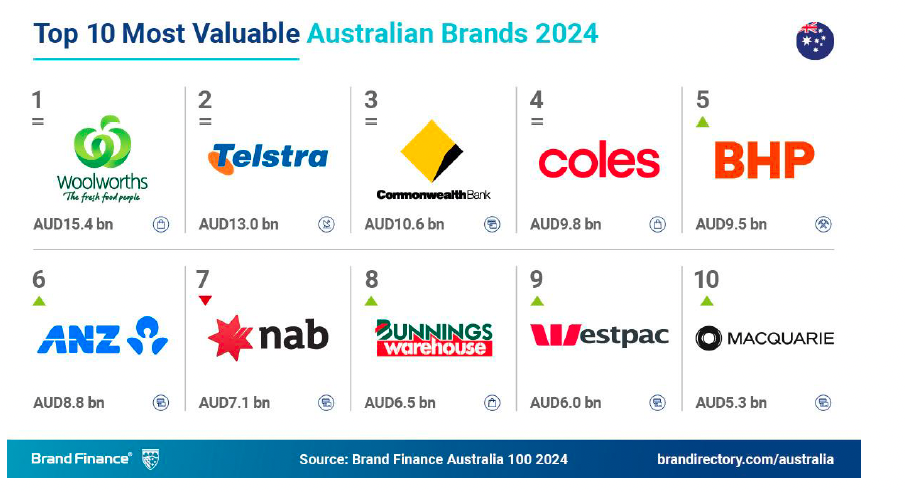‘Cosy’ brand management roles are out, ‘trust managers, AI orchestrators, AEO specialists’ are in: ACAM outlines the new jobs flipping marketers from AI victims to ‘getting paid shitloads’

What you need to know:
- The Australian Centre for AI in Marketing (ACAM) has release a new white paper, Marketing Team of the Future, and accompanying job descriptions for small, medium and large organisations to help marketing teams practically start to build capacity and skills for an AI-led world.
- Among the key new roles it’s positing are brand and customer trust managers, a fresh take on the more “cosy” brand and customer roles of old in the face of growing consumer mistrust of institutions, brands and media and the yawning trust deficit it’s creating.
- Parallel SEO and answer engine optimisation is also on the cards in another evolving job within the marketing function as consumers shift to the LLMs as the nextgen search platforms
- For Foxtel head of marketing operations, Aaron Michie, there’s also a pressing need for marketing orchestrators who can bridge the new and legacy worlds of tech, process, systems and operating ways of working that will be in demand.
- The new ACAM paper also offers up guiding principles, a move to try and provide a framework “for thinking about how to think” about AI-fuelled marketing teams between now and 2027.
The days of “simple, cozy brand manager” roles are over: Within two years, the consumer trust deficit will be so immense, marketing teams will need mission-critical brand risk and customer trust managers to face up to the perfect storm of mistrust that’s only accelerating thanks to AI, dehumanisation, deepfakes and scams, reckons the Australian Centre for AI in Marketing (ACAM).
Those trust-oriented brand and customer roles are among a clutch of new and evolving marketing job descriptions coming out of the latest ACAM whitepaper, ‘The Marketing Team of the Future’, released today.
The paper takes its cues from ACAM’s inaugural Australian AI Readiness Benchmarking report released in July, which painted an anxiety-laden picture of how marketing leaders and their teams are feeling about the onslaught of AI coming into their function. The big question is capability readiness: 62 per cent of CMOs, for instance, felt unprepared to lead their marketing teams through AI change without elevating their AI skills individually. A panel discussion around the findings, featuring marketers from IKEA, Bluescope and The Iconic, subsequently revealed an existential crisis for many, with some even fearing being perceived as cheats when bringing AI into their work.
ACAM proffers tentpole principles for designing future-ready marketing teams by 2027 to combat AI’s onslaught in this latest whitepaper. Marketers are sure to have heard many of these guiding platitudes already, though they’re worth the reminder: Lift your customer game; see data strategy as your essential AI enabler; find your new metrics and impact measures; and reset agency relationships along strategy, insight and higher-level human creativity lines.
What’s different are the detailed job role and remits ACAM and its AI pioneer contributors have come up with alongside the master document. It’s a mix of current marketing roles set to evolve, along with completely new career opportunities expected to emerge. These are supported by recommendations on operating ‘clusters’ for how marketing teams of the future are arranged across large, medium and small organisations.
For example, in the ‘Marketing Team of the Future’ medium-sized role descriptions (10-20 people), 15 roles are itemised, seven aligned to new structural ‘clusters’ including leadership, brand and trust, content and channel, customer experience and insights, paid media and analytics, data and technology, people and productivity. For large organisations (40 people or more), roles are based on a product-based rather than customer segment-based B2C organisation and organised into a central cluster of shared leadership and skills (11 roles) and 3 product clusters (each with 8 roles). There are an additional five roles in a single cluster focused on building future capability and improved ROI.
“People find it hard to visualise their career in the future, what actually, tangibly does AI change, and what should they be doing about it. That vacuum leads to insecurity and anxiety,” ACAM co-founder, Douglas Nicol, tells Mi3. “When we dug into what would help solve this problem, one idea we came up with was to actually draw a picture of what a marketing team would look like in future, what the roles would be in it, so that you can start to have your own thoughts about your own career, where you’d like your career to go in marketing in an AI-enabled world, in a tangible way, and where you can start to be much more specific about where you’re going in your career, thus hopefully addressing some of that AI anxiety.”
Marketers getting real
Seven of ACAM’s AI pioneers – practicing senior marketers – got hands-on with the paper: ANZ Bank GM marketing, Sian Chadwick; IKEA head of marketing, Kirsten Hasler; Woolworths Group head of next-gen marketing innovation, Naomi O’Connor; Foxtel head of marketing operations, Aaron Michie; Mirvac group general manager, innovation, Ben Allen; Grant Thornton Australia CMO, Fraser McNaughton; Merlo Coffee CMO, Nic Fry; and strategic advisor, Cameron Partridge.
For Michie, finding and building a framework “to think about how to think about it” is critical for marketers. “From my perspective, there isn’t a lot of practical info on what does it mean, what do I do, what do I do first, what shouldn’t I do and how I should think about it. AI is one of the most hyped technologies that I have ever seen,” he tells Mi3. “This felt practical, as opposed to AI revolutionising everything, which frankly I’m sick of reading.
“I always start with guidelines and where am I going, what are the things that are going to guide my ways of thinking. This is about that – how you should go about thinking about it.”
Each role comes with suggested lists of skills, objectives, supported by new ways of working and how team dynamics might work.
“Hopefully it’s a useful bit of mental fertiliser, and as a really strong input into figuring out exactly how your specific team evolves,” Nicol adds. “We have also deliberately not included anything to do with job losses around our focus, because there’s been endless content about this kind or that kind of role disappearing. What we’re looking at is the future roles you can choose to evolve into as a human and as a marketing professional. The nature of our content is to have a positive orientation, because there’s enough stuff happening out there that’s negative.”
My personal view is I don’t think you just go, here’s AI, and everything is AI, you have to layer it into everything you’re doing. There will be of course things completely revolutionary and new, but they’re going to much fewer and far between, where AI is adding a 10, 15, 20 per cent increase to the thing I already do. To make that work, I need to connect and bring things together.
Brand management storm incoming
Trust takes centre stage among the fundamentally different roles ACAM is proposing, and its impact is going to be most felt on the brand managers of old.
“You’ve got a perfect storm in the next two years that’s going to affect consumer trust of just about anything, including brands,” comments Nicol. “We’ve got severe levels of misinformation. We’ve got deep fakes, news and social media. We’ve got algorithms people don’t really understand in AI. We’ve got job losses and dehumanisation. We’ve got bias, a lack of transparency, scam levels are going through the roof and AI enables much higher levels – a whole load of new things in the world that are going to mean consumers, in some cases, will retract into their shell and not really trust very much.
“Brands will face a trust deficit. The old role of a brand manager, was quite simple compared to what a new, what we’re calling ‘brand risk manager / customer trust manager’ will face. Potentially, the brand manager in the past spent a lot of time creating brand guidelines and carefully curating that. But now a brand is going into this perfect storm and trust shortage. So we see there being two roles. One is where a brand risk manager is reacting to everything that’s happening in the world and everything being produced by marketing to actually look for misinformation, reputational risk, for brand tone, and that is going to be a full-time job. Because there is going to be stuff created that damages brands.
“The yin and yang of that is the customer trust manager. Sometimes those roles will be combined, but a customer trust manager actually takes proactive initiatives to demonstrate why the brand is being transparent and ethical, the way it’s using data and AI, and communicate strong trust signals to customers.”
Where to upskill, fast
To get there, marketers will need to swiftly skill up in areas like algorithmic bias, privacy compliance and creative governance. Key performance objectives for a customer trust manager will incorporate trust score improvements (NPS and CSAT will still play a role), crisis prevention through early AI alerts, and developing initiatives, guidelines and campaigns that increase brand trust. For a brand risk manager, it’s a mix of reduction in brand risk events, compliance with AI brand safety standards and upholding consistent brand voice across AI-generated outputs.
Nicol points here to clothing brand, Mango, and the backlash it faced after introducing AI content that showed models wearing AI-generated clothes in their communications. The swift outcry came because the business didn’t disclose they were using AI to create imagery, and employed AI showing unnecessarily skinny women.
“The customer trust manager will be actively going out there to do proactive initiatives to build trust, and they would ultimately own the brand trust metrics,” says Nicol. “You cannot underestimate what a change that is, versus the traditional brand manager, which was perhaps a cosier role. This is right in the thick of the trust deficit.”
Marketing orchestration overhaul
Marketing orchestration and the battle of legacy and new tech is another area of disruption. And it’s the most pressing need Michie is seeing in terms of marketing orchestration: He’s backing “the idea of someone who is able to stitch the AI into and with existing and legacy platforms, systems and process”.
ACAM’s report posits firstly a new ‘AI Marketing Orchestrator’ position, which would oversee coordination of AI tools and agents across campaigns, channels and platforms and ensure AI-driven activities align with strategic goals and work seamlessly across functions. For larger teams, evolving the marketing technologist role is also mooted, as well as creating a ‘AI productivity coach’.
“My personal view is I don’t think you just go, here’s AI, and everything is AI, you have to layer it into everything you’re doing,” Michie comments. “There will be of course things completely revolutionary and new, but they’re going to much fewer and far between, where AI is adding a 10, 15, 20 per cent increase to the thing I already do. To make that work, I need to connect and bring things together. There is definitely going to be a role: Around how do you – and what sort of person comes in that understands current processes, legacy systems and can add AI into things. I think that’s really important.”
There is a case to be made for throwing some things out given AI does things in different ways. Michie didn’t rule that out as a possibility. “But that’s much harder, bigger – what the guys have done here is go, ‘if you’re going to take a more evolutionary, incremental approach, these are some roles you should start thinking about’.”
Search demise, LLM rise
Another whopper is the demise of traditional search as consumers move in droves to AI platforms to seek information. Over the next two years, that’s going to see traditional SEO and paid search roles evolve to becoming experts in Answer Engine Optimisation (AEO). But the doozy? Over the next few years, they’ll have to straddle both, says Nicol.
“We’ve labelled it as a new role because the complexity attached to search, where you’re still having to run legacy search programs with Google, traditional SEO and paid stuff, while also becoming experts in AEO and GEO as this transition happens,” he says.
“As AI platforms need to get more profitable they will be offering – well, they are already starting to offer – brand opportunities in answer engine optimisation, so that will become a whole new skill set. That’s just a fundamental change in the ways of operating, and it means whoever’s in charge of that search role is going to become two people: Legacy world and new world.”
You can be on the wrong side of that [AI and marketing] skill shortage, or you can actually get paid a shitload of money and be poached left, right and centre, because you understand how those two things correlate.
Reality versus aspiration
There’s a big question alongside this, however: How realistic it actually is for marketers to start to practically fashion and upskill their teams to reflect the new job realities coming in the next few years. Take the macro context: Swathes of fresh redundancies across marketing teams – the latest including Endeavour Group and reportedly, Diageo – along with bigger business transformation through private equity acquisitions, globalisation and company restructures to find more profitable growth. Then there’s the fact senior and lead marketing roles continue to resist efforts to fit into one clear job description like finance or technology might in the c-suite.
Nicol acknowledges these conditions, and also notes “it’s terrible the way some companies use their AI as a reason for cost cutting”.
“I think that’s a very negative centre of gravity,” he says. “We are already facing a jobs and skills shortage of people who understand – really understand – marketing, and really understand how AI can improve the results of marketing. There is a massive skill shortage looming around that. So you can be on the wrong side of that skill shortage, or you can actually get paid a shitload of money and be poached left, right and centre, because you understand how those two things correlate.
“I think the only way we can look at it as a marketing industry is to say it’s your choice. You can either be part of the upside of the skill shortage, because you have reinvented yourself, or you can be a victim of that.”





